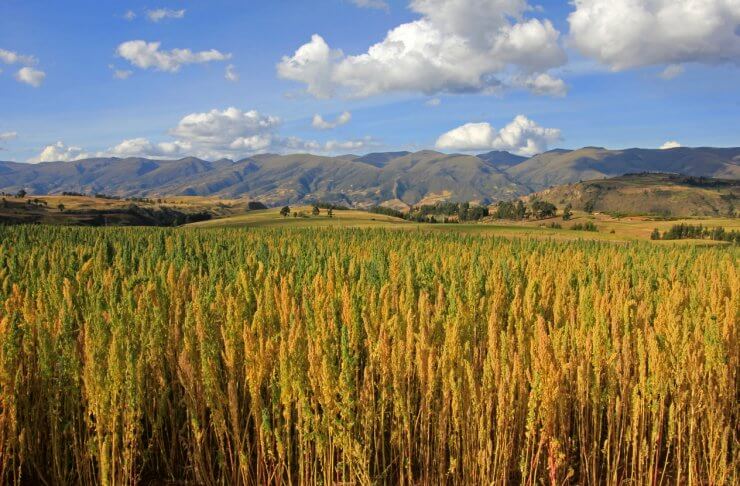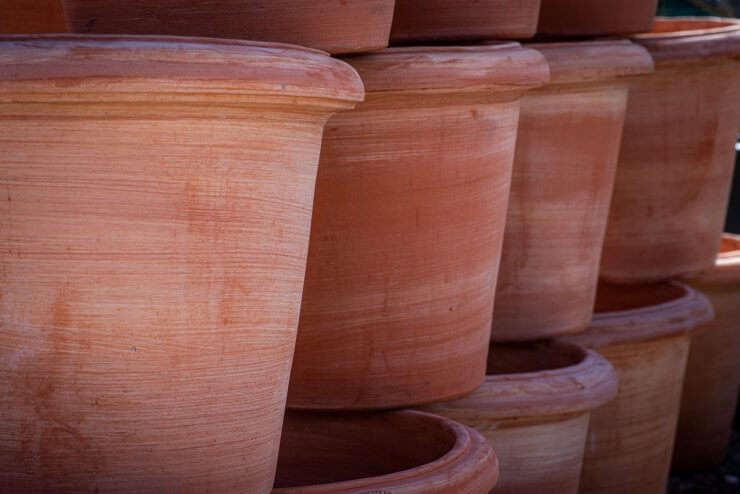
Quinoa growing in open land with loamy, well-drained soil
When first planning your quinoa garden, you should consider the type of land you can tend. Quinoa is not too picky about its soil conditions, though you’ll have best results with loamy, well-drained soil. If you have a large outside plot of land with the right soil and the right conditions for watering and draining, you might have the ideal situation for planting directly in the ground. If, however, your soil is too sandy or not the right composition, you might want to consider planting in raised beds or in containers or pots. Converting your open-land plot into a usable garden might involve a lot of time and effort better spent considering raised beds or containers.
Growing in Raised Beds
![You can grow quinoa in raised beds like these!]](/wp-content/uploads/2021/02/raised-garden-bed-740x643.jpg)
You can grow quinoa in raised beds like these!]
Creating raised beds for your quinoa garden means some extra work for you up front, but allows you more control over your growing environment in the long run. You’ll discover that watering, irrigation, and weeding are much easier, with items closer to your reach and contained in a space that is more manageable than growing in open land. Keep in mind, however, that quinoa plants can grow up to 8 feet tall, so when harvest time comes, you want to be able to reach the plants. If you choose raised beds, you may want to select shorter varieties of quinoa.
To create nicely contained raised beds for your quinoa, enclose your raised beds with wooden sides at least 8 inches wide—this will help keep the bed together, be tall enough, and make irrigation easier, too. With raised beds, your garden is less likely to contain the seeds of weeds that are often found in garden soil. You’ll minimize the incidence of weeds overall, which will save you time and effort later. Weeding itself is much easier with raised beds, because you don’t have to get down so far on the ground to remove weeds.
Annual Tip: To optimize the soil in your raised beds, be sure to amend your soil with composting at least once a year—otherwise, your soil can become less productive for your plants.
Growing Quinoa in Containers or Pots

Large terracotta pots for garden growing
Quinoa is a tall plant and you’ll need several to get a useful yield, so container growing is not the best way to create a quinoa garden. However, if you don’t have a yard and you want to experiment with a few quinoa plants or grow one or two for ornamental purposes, there’s no reason not to give container gardening a try!
You’ll want to make sure that wherever you place your containers your plants will get enough sun. This may mean moving them around during the day. To make it easier—and save your back—try putting your pots on slightly raised rolling casters so you can more easily move them around your space.
The potted patio quinoa is not common—but you can make it work. For example, quinoa plants are drought-resistant, but plants in pots dry out much faster, so you have to be more vigilant about watering and irrigation. Plus, containers can lose important soil nutrients throughout the season, so you might need additional fertilizer.
With container gardening for quinoa, you have to use really big pots or containers—the bigger, the better. Using a 5-gallon pot for one quinoa plant is optimal. Also, don’t put other plants, such as herbs, in the same pot with your quinoa plant as they’ll drain the soil of nutrients and will compete with your quinoa plant for water.
What to do with your container soil at the end of the season: At the end of your quinoa-growing season, the soil in your pots will be spent, which means starting over when you create next year’s garden. Dispose of the soil at the end of the season by dumping the soil somewhere else—in another part of your yard or a place where you won’t be growing plants again.
When planting outdoors, sow quinoa seed by hand when the soil temperatures fall between 65 and 75 degrees F. Plant the seeds 1/4-inch deep on level ground. Space seeds in rows 18 to 24 inches apart with 10 seeds per foot. The seeds generally germinate within four to 10 days and should be thinned to between 6 and 18 inches apart. If starting seedlings indoors, begin about four weeks before the last frost.
How do you grow your quinoa—in open land, in raised beds, or in containers? Why do you prefer your method? Please tell us your tips and tricks for creating an awesome quinoa garden.


 Previous
Previous

